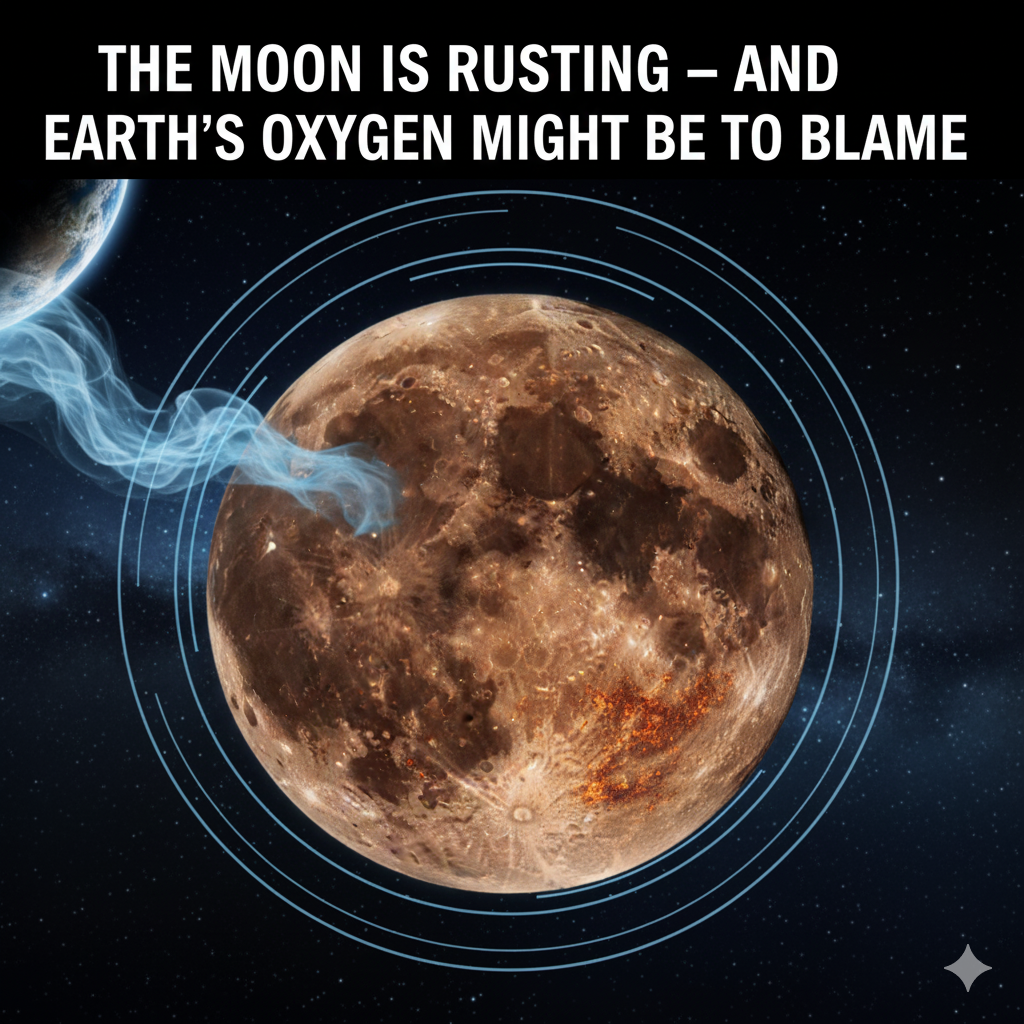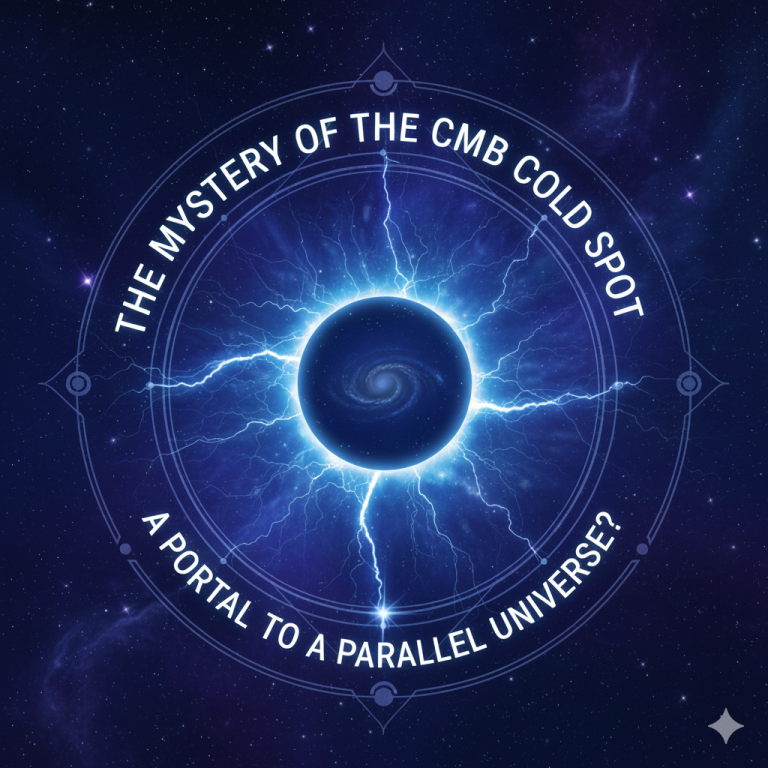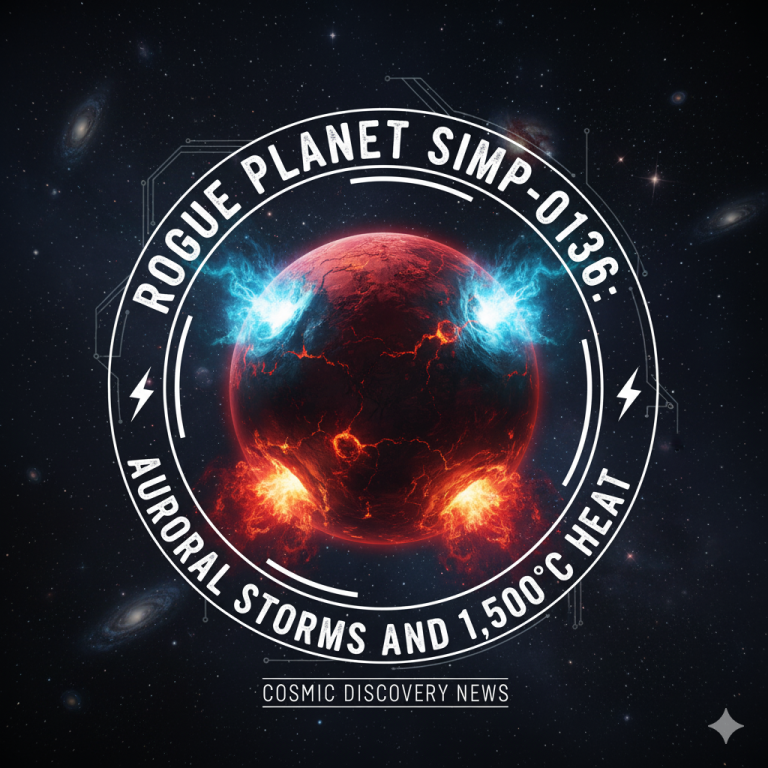The Moon Is Rusting: A Planetary Mystery?
Scientists have made a startling discovery that challenges our understanding of the Moon’s environment, the lunar surface is showing signs of rusting. This phenomenon, detected by data from the Indian Space Research Organisation’s Chandrayaan-1 orbiter, is particularly surprising because rust, which is iron oxide, requires both water and oxygen to form. The Moon, however, is notoriously lacking in both, especially free oxygen. The leading hypothesis for this planetary science mystery points an unexpected finger directly at Earth. Researchers propose that Earth’s oxygen is playing a crucial role. Our planet’s magnetic field creates a long tail, the magnetotail, which the Moon passes through for several days each lunar orbit. During this passage, it is theorized that high-energy solar wind particles are blocked, and at the same time, oxygen ions from Earth’s upper atmosphere can be hurled across the 239,000-mile void and implanted into the Moon’s surface. This provides one of the two key ingredients for the lunar rusting process, turning the Moon into a cosmic rusting laboratory.
The presence of the other vital ingredient, water, is also key to solving this interplanetary reaction puzzle. The rust is not found everywhere, it is predominantly detected on the side of the Moon that faces Earth. This specific location supports the Earth-oxygen theory. Furthermore, the rust is associated with areas where water ice has been confirmed to exist in permanently shadowed craters. It is possible that the water molecules are released by micrometeorite impacts, mixing with the lunar soil, or regolith. When the solar wind, which is a stream of charged protons, hits the surface, it could interact with this water and the implanted Earth-oxygen to facilitate the oxidation of iron-rich minerals like those found in the lunar soil. This discovery of iron oxide on the Moon does more than just present a fascinating scientific anomaly, it reveals a dynamic and previously unknown chemical exchange between the Earth and the Moon. It demonstrates that the environments of planetary bodies are not always isolated and can be profoundly influenced by their celestial neighbors, a concept that could have implications for understanding other moons and planets throughout the galaxy.
Frequently Asked Questions
Question: How can the Moon rust without air or water?
Answer: The rust forms because oxygen from Earth’s atmosphere is transported to the Moon’s surface via its magnetic field, where it interacts with water molecules from lunar ice and iron in the soil.
Question: Where was the rust found on the Moon?
Answer: The spectral signature of rust is stronger on the lunar surface that faces Earth, supporting the theory that Earth is the source of the oxygen.
Question: What role does Earth’s magnetic field play?
Answer: Earth’s magnetotail shields the Moon from solar wind protons during its passage, potentially creating a favorable window for oxygen ions to react with surface materials.
Question: Is the Moon turning red like Mars?
Answer: No, the rusting is a very subtle process detected by spectral analysis and is not visible to the naked eye, so the Moon’s appearance remains unchanged.
Question: What is the source of the water on the Moon?
Answer: Water exists as ice in permanently shadowed craters at the lunar poles, and it can be released and distributed by micrometeorite impacts.
Question: What instrument discovered the rust?
Answer: The discovery was made using data from the Moon Mineralogy Mapper (M3) instrument aboard India’s Chandrayaan-1 orbiter.
Question: Does this mean the Moon has an atmosphere?
Answer: No, the Moon has an extremely thin and negligible exosphere, which is not sufficient to support rusting on its own.
Question: Could this discovery change our understanding of the Moon?
Answer: Yes, it reveals a active chemical connection between Earth and the Moon and shows that the lunar surface is more dynamically active than previously thought.
Question: Are there other planets where this could happen?
Answer: Potentially, yes. Similar chemical exchanges could occur between other planets and their moons, especially if they are within a strong magnetic influence.
Question: What is hematite?
Answer: Hematite is a common mineral form of iron oxide, or rust, known for its reddish-brown color and often forming in the presence of water and oxygen.
Keywords: moon rusting, lunar rust, iron oxide on moon, Earth’s oxygen, planetary science mystery, solar wind, magnetotail, water ice on moon, interplanetary reaction, oxidation of iron, hematite moon, Chandrayaan-1, lunar surface chemistry, chemical exchange
Tags: #MoonRust #PlanetaryScience #SpaceDiscovery #EarthAndMoon #LunarScience #SpaceMystery #Chandrayaan1 #SolarWind #Hematite #SpaceChemistry



